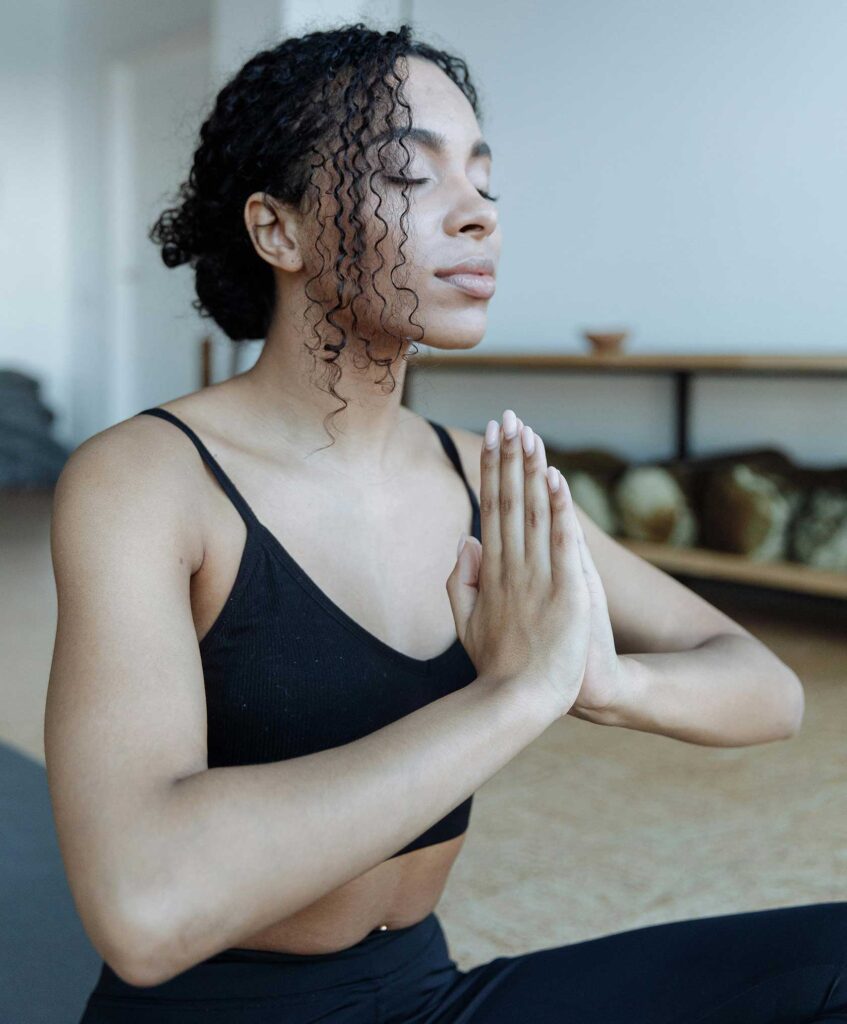
Ikechi Ojore, a musician, educator and social media influencer, recently posted, “I love being Black. It’s dangerous AF, but it’s dope.”
And certainly, many can agree, it’s “dope.” But it’s the “dangerous AF” part that leads to so many negative daily realities and outcomes (re: health, economics, education, etc.) that have Black men, women, and children at the wrong end of nearly every quality-of-life indicator.
Enter the army of Black people who are rediscovering mindfulness practices and using them to combat these cultural/racial challenges.
What is mindfulness?
Mindfulness practices are activities and skills that help a person focus awareness (attention) on the present moment, calmly acknowledging and accepting their feelings, thoughts and bodily sensations. These practices have been shown via scientific research to be proven therapeutic techniques that can increase the sense of gratefulness, reduce stress, improve attitude, increase metabolism and a host of other benefits.
Mindfulness practices include yoga, meditation, walking, gardening and other activities that allow a person to be fully in the moment. Even dietary practices aimed at improving one’s health can be considered a mindfulness practice.
Yoga instructor Onica says mindfulness is not only what you practice while on the yoga mat, but what you do once you end the session.
Yoga/meditation
Though yoga and meditation are ancient holistic health practices, millennial and Gen Z members are the ones making the big push to incorporate these practices in more traditional Black churches. However, many “seasoned saints” are finding the practices right up their alley. And that makes sense, seeing that these two practices are “go-at-your-own-pace” activities.
And because there are so many different kinds of yoga practices, it is possible for anyone to start.
“Whether you’re a couch potato or a professional athlete, size and fitness levels do not matter because there are modifications for every yoga pose and beginner classes in every style,” says Dr. Natalie Nevins, DO, a board-certified osteopathic family physician and certified Kundalini Yoga instructor in Hollywood, California (source: osteopathic.org).
“The idea is to explore your limits, not strive for some pretzel-like perfection. It is a great way to get in tune with your body and your inner self.”
Here are some of the physical benefits of yoga:
- Lessened chronic pain (i.e., lower back pain, arthritis, headaches and carpal tunnel syndrome)
- Lowered blood pressure
- Reduced insomnia
- Increased flexibility
- Increased muscle strength and tone
- Improved respiration, energy and vitality
- Maintaining a balanced metabolism
- Weight reduction
- Cardio and circulatory health
- Improved athletic performance
- Protection from injury
Onica sees other benefits.
“I just love the sense of community that naturally forms as I lead classes. And I think that’s really important to find kind of your tribe, and to have a place to feel safe to release.”
Amanda, a sound healer, adds the ancient Egyptian practice of sound meditation to Onica’s yoga classes to enhance the mindfulness experience.
“When the sound bowls are played it not only opens up the chakras, it allows for the energy to move and clear energy blockages that may cause stress, unease and make it harder to fall asleep.”
Diet
Diet is a great place to start, according to health care professionals. Jennifer Jones, founder/owner of JENuine Nutrition and a certified integrative, holistic nutrition health coach, personal trainer and wellness educator, lives by the dual mottos “Love yourself to better health” and “Live with intention, eat with intention.”
“Not only can what we eat improve our mental and emotional well-being, but things we do to improve our mental health and what we think can then lead to better food choices,” said Jones.
And she’s not alone.
“Chronic diseases, whether it’s diabetes or heart disease or obesity, they’re caused by our diet and lifestyle,” said Dr. Munish Chawla, who with his wife, Dr. Bandana Chawla, are physicians who are board certified in lifestyle medicine and founders of their nonprofit, Peaceful Planet Foundation. “We need to fix that. Otherwise, we can throw all the pills, all the procedures [at them, but] we’re not addressing the root cause.”
According to the CDC, the benefits of eating healthy for adults are as follows:
- Keeps skin, teeth and eyes healthy
- Supports muscles
- Boosts immunity
- Strengthens bones
- Lowers risk of heart disease, type 2 diabetes and some cancers
- Supports healthy pregnancies and breastfeeding
- Helps the digestive system function
The benefits for children include many of the same things, along with supporting brain development and healthy growth. And there are additional benefits as well for persons of all ages.
Additional benefits
Mindfulness offers a wide variety of benefits, from anxiety and stress reduction to improved sleep and even improved attention span and focus. Although results vary, the emotional, mental, and physical health benefits of mindfulness are well documented.
These benefits include 1) better communication, a foundation for improved relationships; 2) higher sense of gratefulness; 3) feeling better about yourself by reducing negative self-talk; and 4) increased enjoyment of meals by reducing distractions while you eat, which in turn improves digestion.
This article originally appeared in the Houston Defender.






